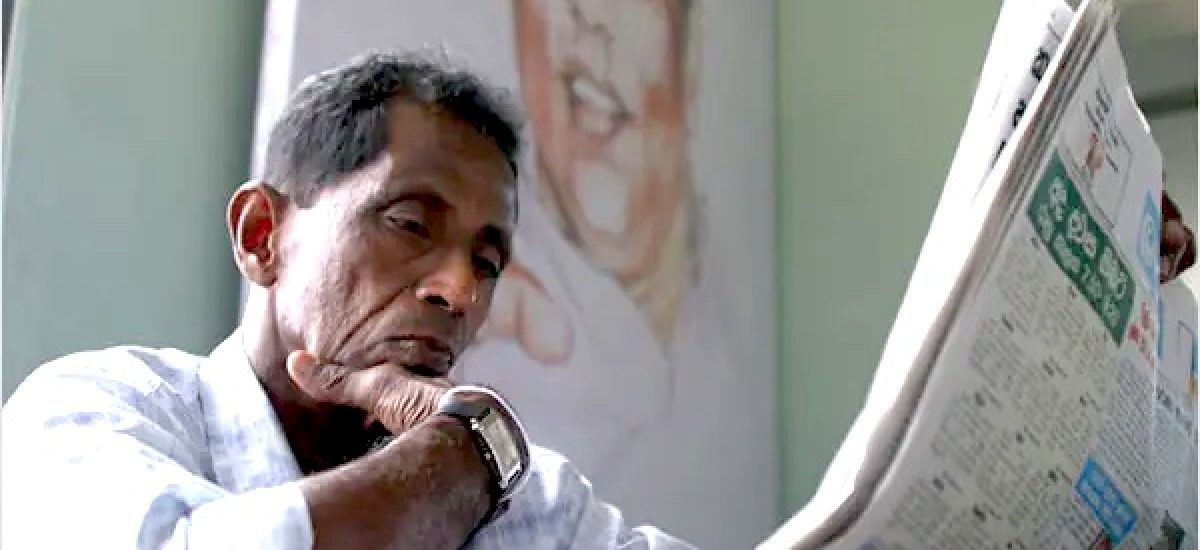Photo courtesy of The New York Times
On May 27 the Ministry of Mass Media convened a discussion on the National Media Policy, which is will be presented by the NPP government. Copies of the document were provided in Sinhala and English but no Tamil language version has been released yet.
A government typically introduces policies in line with its vision and trajectory. The National Media Policy draft was first proposed under President Ranil Wickremesinghe who assumed office after being installed by the Rajapaksa administration. Soon afterwards, President Wickremesinghe restricted freedom of expression, introducing the Online Safety Act and drafting the Broadcasting Authority Bill, both aimed at controlling the media.
It doesn’t take a rocket scientist to recognize the intent behind such a policy when introduced by authoritarian leadership.
The same National Media Policy has now been revived by the NPP government although it was not included in its election promises. The NPP’s campaign emphasized state regulation of the media and ideologically driven media culture rather than recognizing the media as the fourth pillar of democracy. Furthermore, the government plans to enforce a set of media ethics, which is another distortion of press freedom.
Given urgent issues related to media rights and freedom of expression to be addressed, it is unclear why the government is rushing to introduce this policy at this moment.
Reports indicate that the United Nations Development Program (UNDP) Colombo Office is involved in drafting the policy and the Minister of Mass Media has insisted it must be finalized before the end of June.
However, the National Media Policy is not aligned with UNESCO’s media freedom principles, raising concerns about press freedom and the independence of the media.
Many countries have national media policies to regulate public service media (PSB), enforce transparency in media ownership and restrict cross media ownership (the same entity owning both print and electronic media). Cross media ownership is banned in several countries to ensure diversity and independent journalism.
In Sri Lanka, more than half of the print and electronic media are owned by families with clear alliances with political parties.
However, President Wickremesinghe’s National Media Policy, now promoted by the NPP government, does not include provisions to transform state owned media into independent public service media. Instead, like past governments, the NPP sees state media as a tool for government publicity rather than a public service instrument.
Sri Lanka did not have government owned print media until 1972, when the Sirimavo Bandaranaike government “nationalized” Lake House and Times of Ceylon media outlets.
Today, neither India nor Pakistan has state controlled print media while in South Asia only Nepal has a similar policy. Nepal’s National Mass Communication Policy was initially introduced to convert state owned electronic media into public service media and to democratize the media landscape but over time it has failed and become a tool for media suppression.
The only serious attempt to reform Sri Lanka’s media sector occurred under the Kumaratunga administration in 1994, driven by alternative media movements. Upon taking office, President Kumaratunga’s government formed four committees through a cabinet paper, led by Minister Dharmasiri Senanayake, to democratise media landscape. Among them, the committee focused on media law reform was the most significant.
The committee on media law reform was chaired by R.K.W. Gunasekara, a renowned human rights lawyer and included legal experts such as Jayampathy Wickramaratne, Rohan Edirisinha, Suriya Wickramasinghe, Shirani Bandaranaike, Javid Yusuf and Victor Gunawardena – a caliber of experts hard to imagine today.
Their report, compiled after two years of study, remains Sri Lanka’s most comprehensive document on media law reform. Another crucial report, the Sidath Sri Nandalochana report, focused on expanding media ownership, particularly government owned print media establishment Lake House. However, following Dharmasiri Senanayake’s removal, Mangala Samaraweera took control of the Ministry of Mass Media, stalling progress.
If the NPP government truly wishes to democratise the media sector, it must begin with these reports.
Sri Lanka government owns over three dozen media outlets. Its dual role as both media regulator and media owner creates a clear conflict of interest. If a National Media Policy is to be introduced, the public has a right to know how the current draft was prepared, by whom and under whose influence.
If the government wishes to prove its commitment to press freedom, it must take immediate action by:
- Ending impunity for crimes against journalists: For example, ensuring justice in cases related to Prageeth Eknaligoda, Lasantha Wickrematunge, Dharmeratnam Sivaram and Keith Noyer.
- Guaranteeing freedom of expression: Providing legal protections for journalists and rights activists, with special focus on the Tamil journalists and activists in the North, who have been arrested or harassed for protesting and reporting.
- Ensuring state media independence: Amending laws to require Constitutional Council approval for appointing directors and editors in chief of state media outlets.
Seeking true media democratization from a government that refuses to reform state media is a contradiction.
The National Media Policy, as proposed, is a government controlled regulatory framework rather than a true democratization effort. Sri Lanka deserves a media policy that upholds press freedom, ensures journalistic independence and fosters public service media rather than one that consolidates state control.

